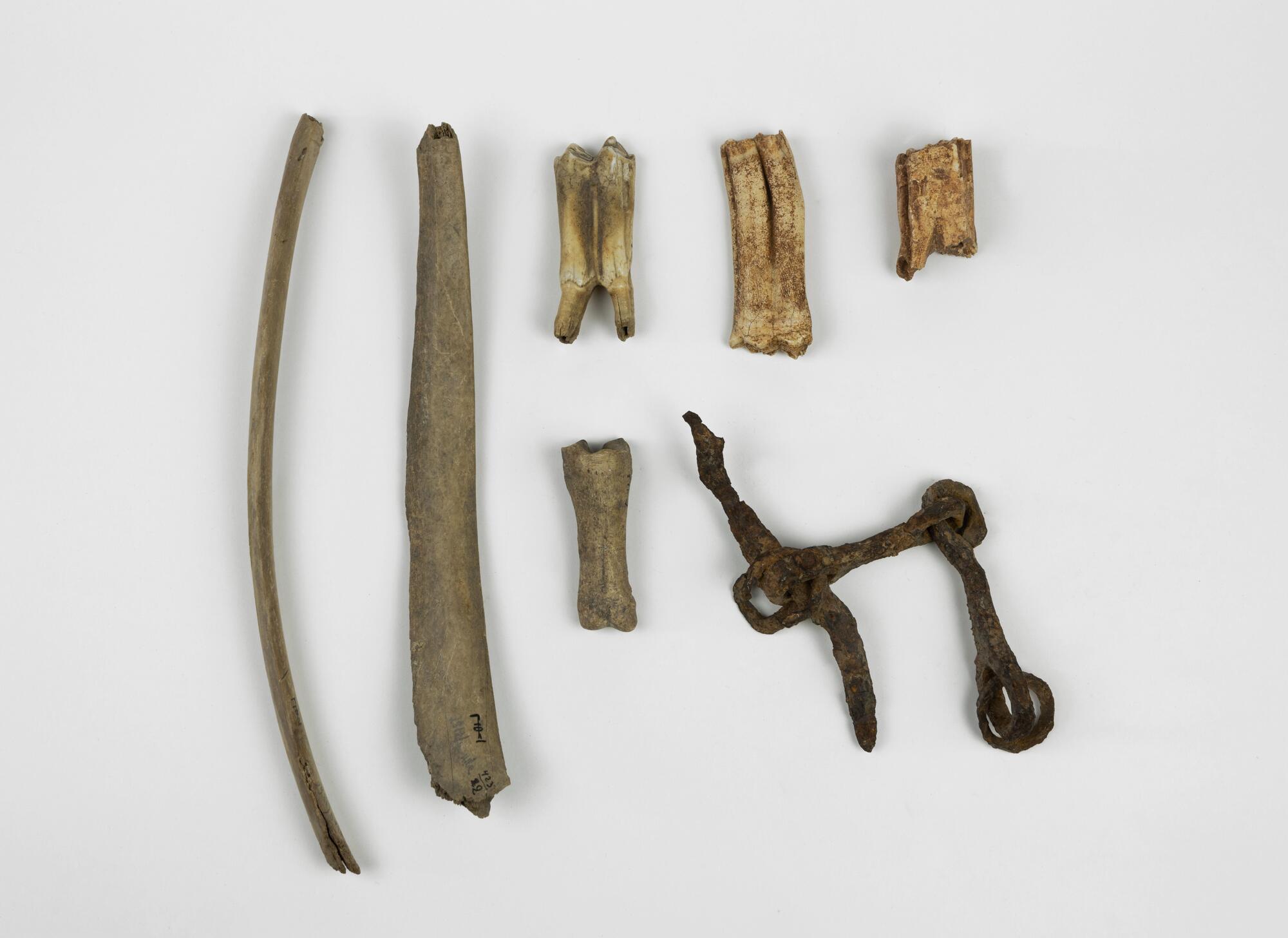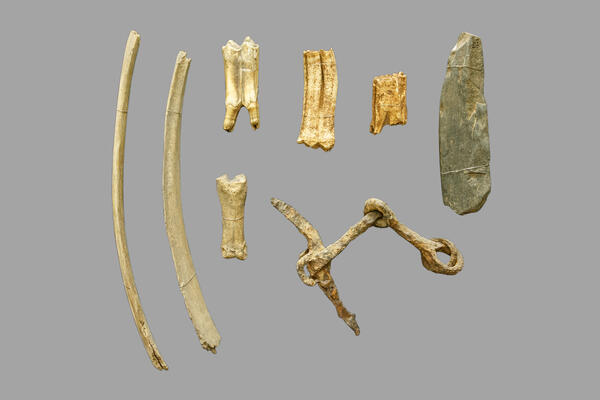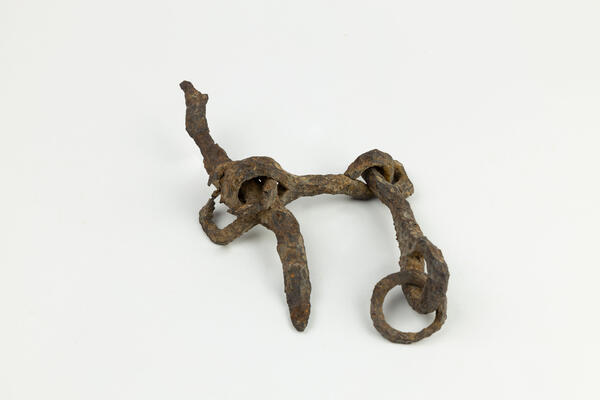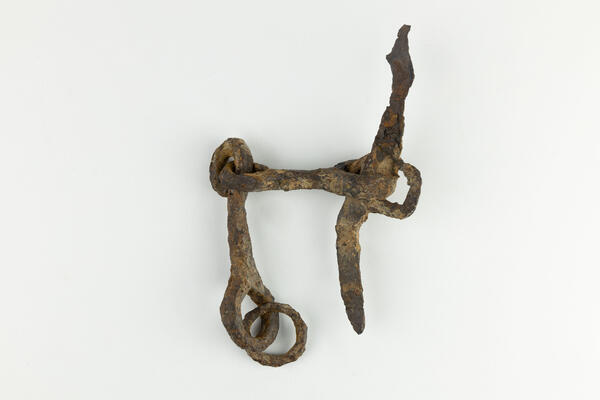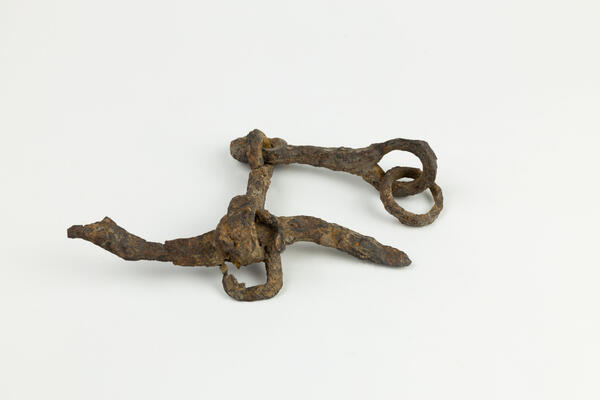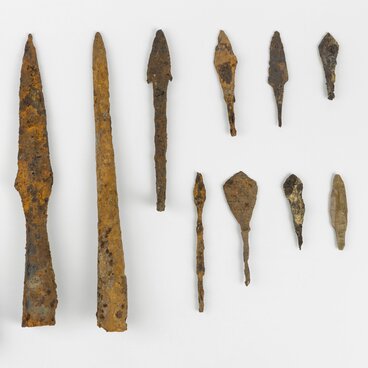The displayed bits and bones of domestic animals were found near the village of Gordino in 1965. The finds belong to the Polomskaya and Chepetskaya archaeological cultures that existed more than a thousand years ago. During that period, the Cheptsa River basin was inhabited by tribes that spoke Permian languages. They left over two hundred monuments from the early Middle Ages.
The old name of the village of Gordino, where these exhibits were found, is Guryakar, and the legend of its origin is described in the Udmurt epic. The heroes Dondy, Idna, Vesya and Gurya came to the banks of the Cheptsa River and built settlements (or “kara” — cities in Udmurt) on the mountains, which they pulled out of the ground with their own hands.
The settlement of Idnakar is the largest and most significant archaeological monument in the Kama region of the 9th–13th centuries. It covers an area of four hectares and is protected as a monument of historical and cultural heritage. Legend has it that it was founded by the hero Idna on Soldyr Mountain to reign over the Chepetsky Udmurts. Neighboring villages were named after Idna’s father and brothers — Dondykar, Vesyakar and Guryakar.
The cultural layer of Idnakar contains remnants of residential and agricultural buildings, fragments of tools and utensils, objects of worship, dishes and ornaments that tell a lot about the life of medieval Udmurts. It was a large craft center, where blacksmithing, bone-cutting, ceramics and iron-manufacturing flourished.
One of the main occupations of the tribes was animal husbandry, which provided people with food and raw materials for the production of clothing and household items. People sewed warm winter fur coats from animal skins, shoes from leather, and fabrics were made of wool. Bones of large and small cattle, horses, dogs and pigs are found at the excavations of the Idnakar settlement.
During the early Middle Ages, the Udmurts were engaged in agriculture and grew spelt, rye, wheat and barley. Manure was used to enrich the soil, and horse-drawn power was used for plowing. In severe snowy winters, the animals were kept in closed stables. This is evidenced by the structures with a layer of manure uncovered by archaeologists on the sites of ancient settlements.
The old name of the village of Gordino, where these exhibits were found, is Guryakar, and the legend of its origin is described in the Udmurt epic. The heroes Dondy, Idna, Vesya and Gurya came to the banks of the Cheptsa River and built settlements (or “kara” — cities in Udmurt) on the mountains, which they pulled out of the ground with their own hands.
The settlement of Idnakar is the largest and most significant archaeological monument in the Kama region of the 9th–13th centuries. It covers an area of four hectares and is protected as a monument of historical and cultural heritage. Legend has it that it was founded by the hero Idna on Soldyr Mountain to reign over the Chepetsky Udmurts. Neighboring villages were named after Idna’s father and brothers — Dondykar, Vesyakar and Guryakar.
The cultural layer of Idnakar contains remnants of residential and agricultural buildings, fragments of tools and utensils, objects of worship, dishes and ornaments that tell a lot about the life of medieval Udmurts. It was a large craft center, where blacksmithing, bone-cutting, ceramics and iron-manufacturing flourished.
One of the main occupations of the tribes was animal husbandry, which provided people with food and raw materials for the production of clothing and household items. People sewed warm winter fur coats from animal skins, shoes from leather, and fabrics were made of wool. Bones of large and small cattle, horses, dogs and pigs are found at the excavations of the Idnakar settlement.
During the early Middle Ages, the Udmurts were engaged in agriculture and grew spelt, rye, wheat and barley. Manure was used to enrich the soil, and horse-drawn power was used for plowing. In severe snowy winters, the animals were kept in closed stables. This is evidenced by the structures with a layer of manure uncovered by archaeologists on the sites of ancient settlements.
